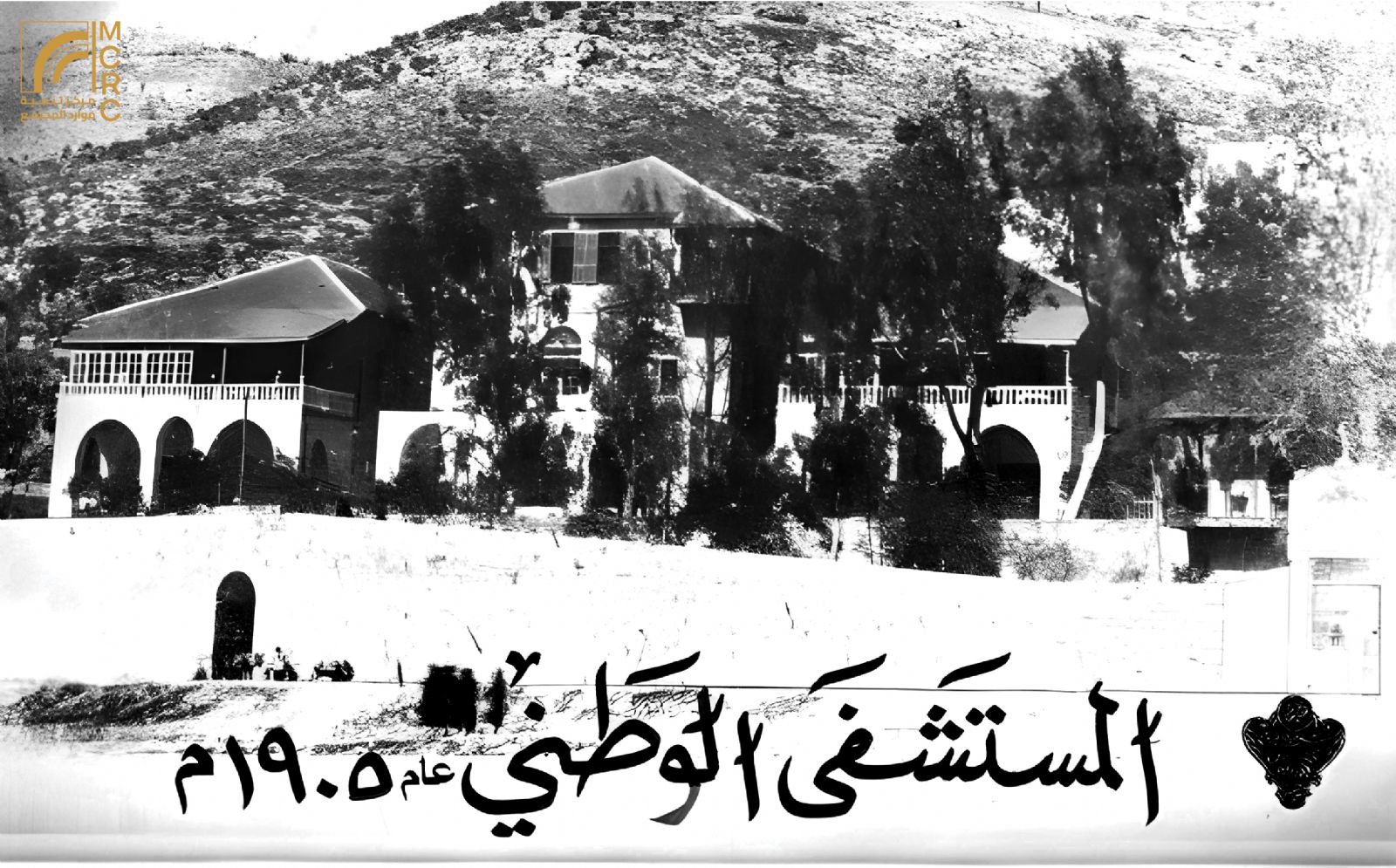
In Nablus, there was an old hospital that was insufficient for the needs of the population. With the increasing population and the growing demand for modern medical services in Nablus and its suburbs, some citizens launched a fundraising campaign to build a new hospital. This ultimately led to the establishment of a hospital named the National Hospital.
The hospital was founded during the Ottoman Empire in 1888, located in an area overlooking the old town from the northern mountain. It began operating with a clinical capacity of 60 beds, offering services in emergency, surgery, obstetrics and gynecology, pediatrics, operations, orthopedics, cardiology, internal medicine, and neurology. Over time, several expansions were made to the hospital, increasing the number of beds and adding new departments. In 1934, additional beds were added for contagious cases, and a nursing school was established. In 1940, a new wing was added to the hospital, and the equipment in the surgery, obstetrics, and infectious disease departments was expanded and modernized. By 1948, the hospital had around 144 beds.
The structure of the hospital still bears the architectural imprint of the Ottoman era, characterized by arches in its corridors, the Ottoman seal on its main entrance, and the old stones that stand out. Additionally, some landmarks remain as testimony to that time, particularly the grave of the hospital's director, Al-Kurdi, who managed the hospital for 17 years before falling ill and passing away; he was buried in the courtyard as a tribute to him and in commemoration of his memory.
كان في نابلس مستشفى قديم لا يكفي حاجة السكان، ومع ازدياد التعداد السكاني، وحاجة السكان إلى خدمات طبية حديثة في مدينة نابلس وضواحيها، دفع ذلك بعض المواطنين للقيام بحملة لجمع التبرعات لبناء مستشفى جديد، أدت في النهاية إلى إنشاء مستشفى سمي المستشفى الوطني، تأسسَ المستشفى في عهد الدولة العثمانية عام 1888 في منطقة مطلة من الجبل الشمالي على البلدة القديمة. بدأ المستشفى العمل بقدرة سريرية تبلغ 60 سريراً، في أقسام الطوارئ، الجراحة، النسائية والتوليد، الأطفال، العمليات، العظام، القلب، الأمراض الباطنية والقلب والأعصاب. مع الزمن، أجريت عدة توسعات للمستشفى؛ لزيادة عدد الأسرة، وإضافة بعض الأقسام، ففي عام 1934، أضيفت عدة أسرة للحالات المعدية، وأنشئت مدرسة للممرضات. وعام 1940، أضيف جناح جديد إلى المستشفى، وجرى توسعة وتحديث أجهزة أقسام الجراحة، التوليد، وغرف الحالات المعدية، وبحلول عام 1948، كان المستشفى يضم حوالي 144 سريراً، ولا يزال مبنى المستشفى يحمل البصمة المعمارية العثمانية، فالأقواس في أروقته، والختم العثماني على مدخله الرئيسي، وتلك الحجارة القديمة أكثر ما يميزه، فضلاً عن وجود بعض المعالم التي لا تزال شاهدة على ذلك الزمن، ولا سيما قبر الطبيب الكريدي الذي امتدت إدارته للمستشفى آنذاك 17 عاماً قبل أن يُصاب بمرض ويتوفى ويدفن في ساحته، تكريما له وتخليدا لذكراه .